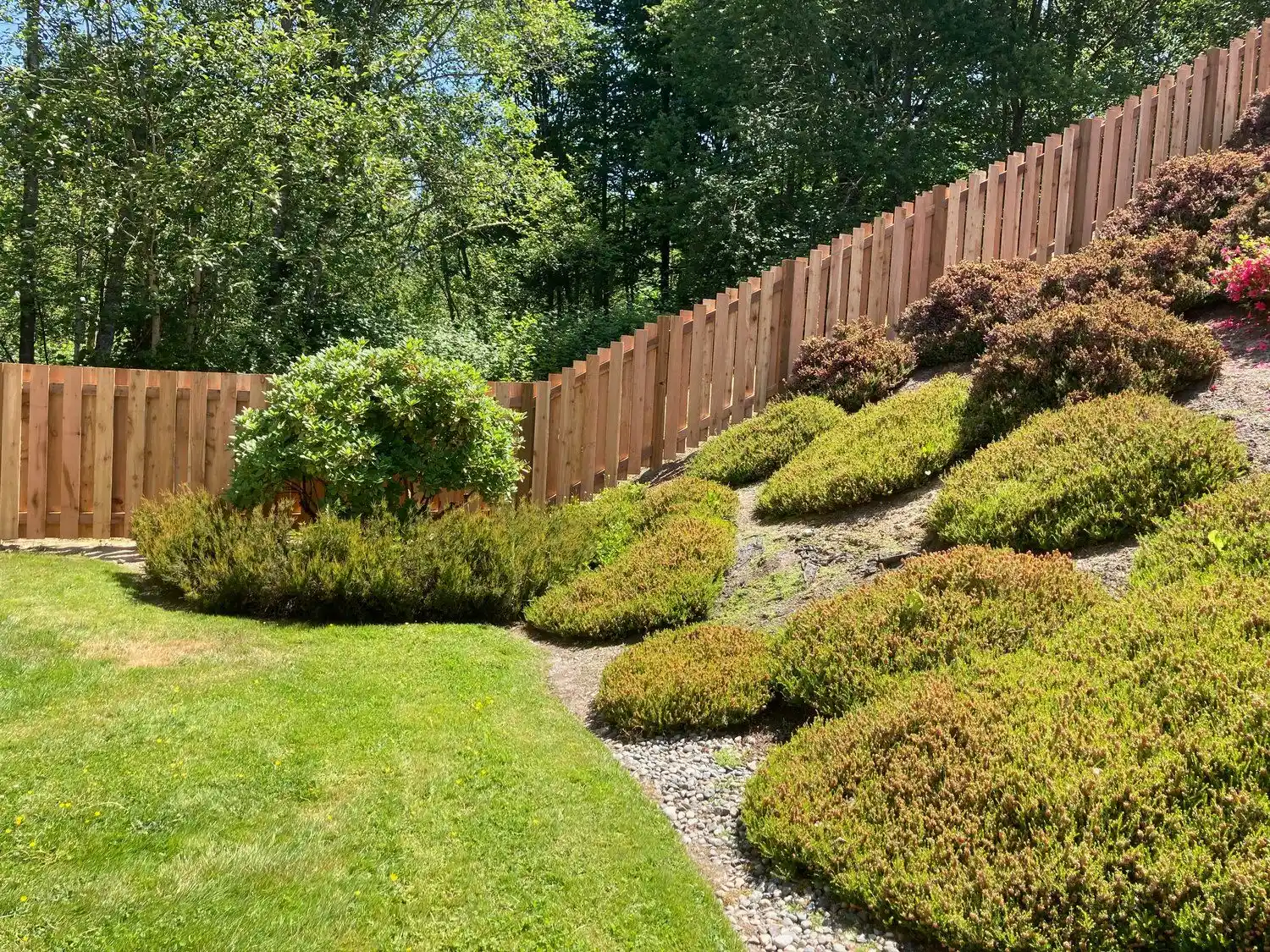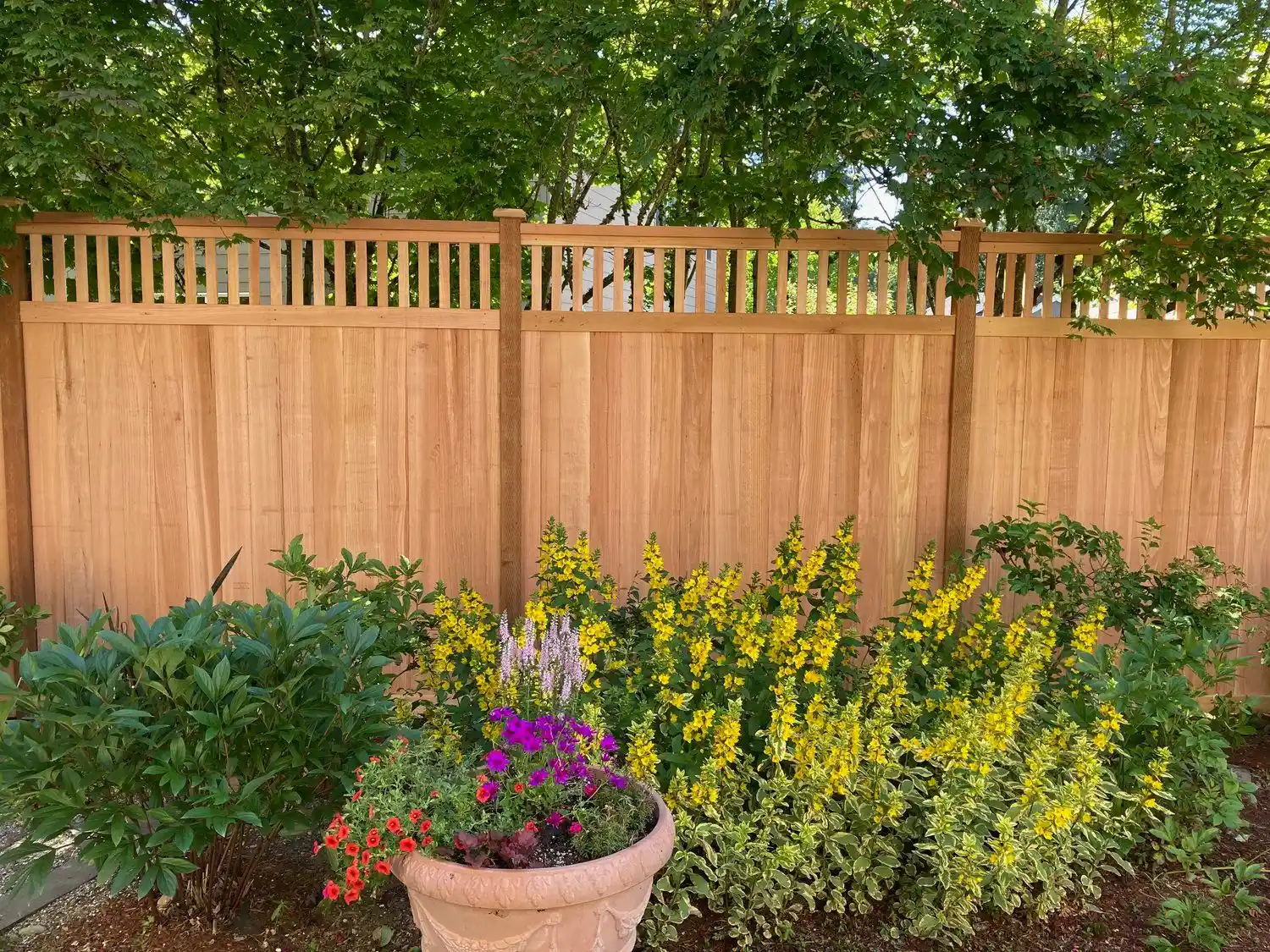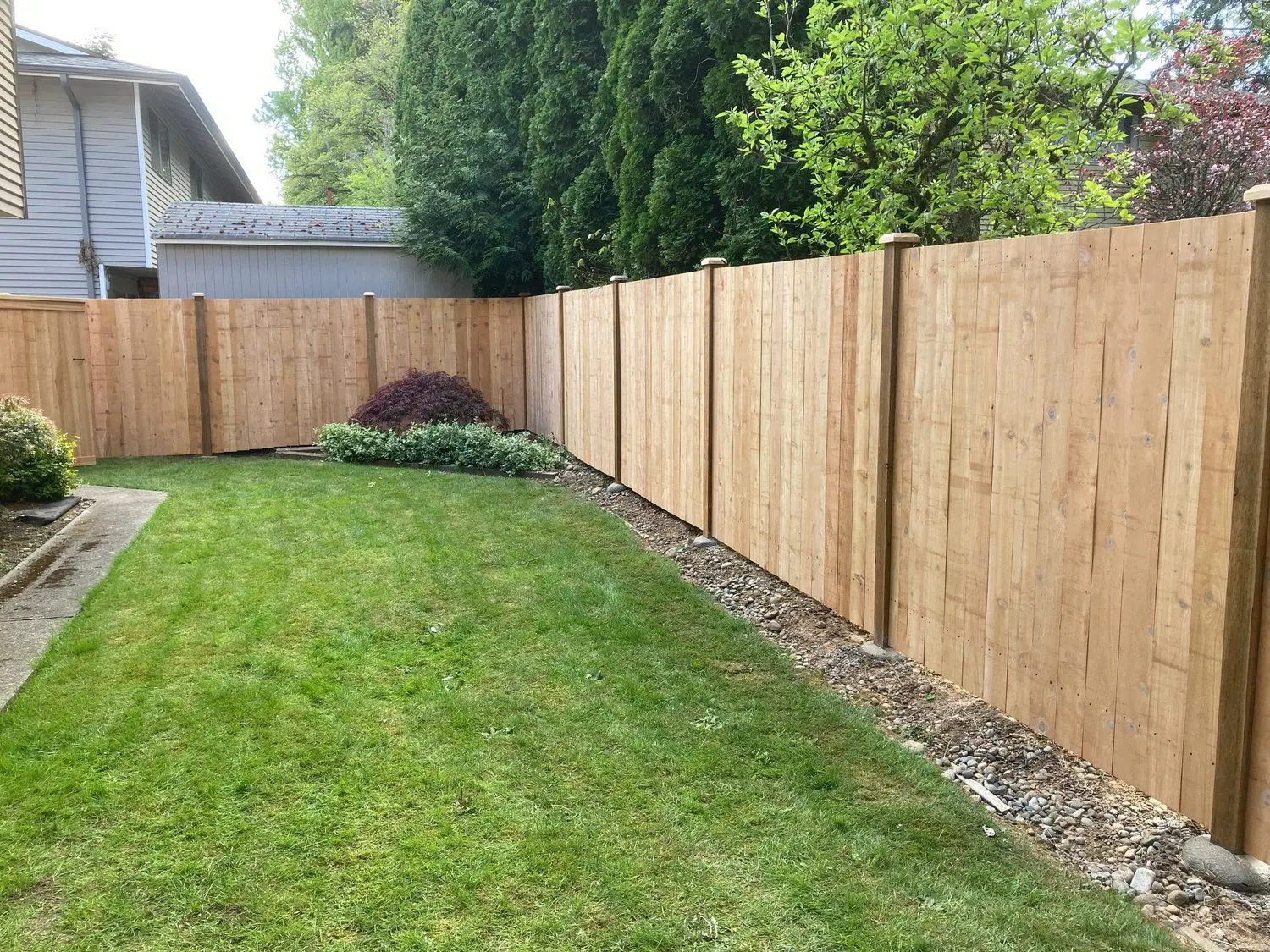Who owns which fence? Discovering the answer can prevent disputes and clarify repair obligations. This guide will show you how to determine fence ownership.
Key Takeaways
- Identifying fence ownership is essential for repair responsibilities, typically indicated by fence posts and property deeds.
- Local laws, zoning regulations, and homeowners association rules can dictate fence ownership, design, and maintenance standards.
- Clear communication with neighbors and documentation are key to resolving disputes and establishing maintenance responsibilities for shared fences.
Determining Fence Ownership
Identifying the owner of a fence helps determine responsibility for repairs. While it can be complex, clear ownership can prevent disputes and boost property value. Typically, fence posts stand on the owner's land, indicating ownership.
The side of the fence posts can also indicate ownership.
Checking Property Deeds
Property deeds can clarify fence ownership. A 'T' on your side of the title plan signifies ownership, while an 'H' on both sides indicates joint ownership. You can obtain a copy of your property deed from your county or city's land records office or online.
If the title deeds are unclear, apply to the Land Registry for an official copy of the title and title plans.
Property Surveys
Property surveys accurately define boundaries, aiding in identifying fence ownership. Hire a licensed land surveyor if you don't have a current survey.
Boundary markers or monuments at the corners of your property can also establish boundaries.
Legal Documents
Key documents to examine include transfer documents, conveyance deeds, and title plans. Symbols like 'T' and 'H' on title plans indicate sole and shared ownership, respectively. Conveyance deeds often detail responsibilities and ownership related to fences, clarifying rights and obligations.
These documents clarify ownership and responsibilities concerning fences.
Understanding Local Laws and Regulations
Local ordinances and zoning regulations dictate fence ownership and placement rules. They may set height limits, materials, and other criteria affecting ownership and maintenance.
Zoning Regulations
Zoning ordinances set specific requirements for fences, including design standards and height limitations. Adhere to local building codes and zoning laws to avoid penalties.
For example, fences often need to be set back around 5 feet from property lines. Planning permission is typically needed for fences over two meters high or adjacent to a public road above one meter.
Homeowners Association Rules
Homeowners Association (HOA) rules often establish guidelines for homeowners regarding the design and construction of fences within the community. Obtain a copy of HOA by-laws and design requirements before planning a fence.
HOA rules may also define fence ownership and maintenance responsibilities, guiding neighbor collaboration on shared fences.
Planning Permission
Some fence constructions require planning permission. Jurisdictions often need permits for tall or solid fences, especially those exceeding height limits or adjacent to public roads.
Check with your local council planning department to ensure compliance with regulations.
Responsibilities for Fence Maintenance
Knowing who maintains a fence is as important as knowing who owns it. Legal documents often clarify these responsibilities with symbols on title plans.
Sole Ownership
As the property owner, you are responsible for its maintenance and repairs. Title plans usually indicate ownership, clarifying who handles repairs.
In rental properties, landlords generally handle major repairs and fence maintenance.
Shared Ownership
Fences located directly on property lines are co-owned by the adjacent property owners. This shared ownership means both neighbors are equally obligated for repairs and maintenance. Repair costs for jointly owned fences are often shared between neighbors.
Establishing a mutual agreement can outline shared responsibilities and prevent future disputes.
Neighbor's Fence
If a neighbor owns the fence, seek their consent before making alterations or repairs. You have no legal right to change their fence without permission.
If a neighbor's fence is falling apart, you may build a fence next to theirs. However, if a neighbor's fence falls and damages your property, they are typically responsible for the repairs.
Handling Fence Disputes
Fence disputes can be a source of stress and tension between neighbors. Addressing these issues promptly and amicably can save a lot of headaches.
Communication with Neighbors
Maintaining a civil relationship with neighbors can facilitate resolving disputes without resorting to legal actions. Clear communication is essential for resolving fence ownership disputes amicably.
Mutual agreements on fence responsibilities can prevent misunderstandings and encourage cooperation.
Mediation and Legal Advice
Mediation is often required by courts as a first step before proceeding to trial in boundary disputes. Hiring an attorney is prudent when involved in a dispute over a shared fence. Fence-related agreements can be made legally binding when they are documented in written agreements. File these documents with the county recorder.
If a party does not comply with a fence viewer's decision, they could face consequences. This may include having to cover the full cost of the fence for their neighbor.
Adverse Possession
Adverse possession refers to a legal doctrine where long-term use of land may result in ownership transfer. When adverse possession is established, the original fence owner may lose rights to the land, affecting their ownership.
This issue can affect who maintains or replaces a fence.
Special Cases and Exceptions
Special cases and exceptions can complicate fence ownership and maintenance.
Rental Properties
In rental properties, landlords maintain garden fences. If a garden fence is worn or damaged, landlords arrange and pay for repairs.
Tenants usually aren't responsible for fence maintenance unless specified in the lease.
Boundary Fences on Property Lines
Fences on property lines are jointly owned by adjacent property owners. Neighbors can agree on the boundary fence and maintenance responsibilities.
Notification in writing 30 days before installing a fence on the property line is often required.
Historical Agreements
Previous agreements regarding an existing fence can influence current ownership and maintenance responsibilities. These historical contracts can dictate current responsibilities and ownership of a shared fence.
Review past agreements to determine who is responsible for fence maintenance.
How to Build a New Fence
Building a new fence involves several important steps to ensure compliance and harmony with neighbors.
Establishing Boundaries
Establish clear property boundaries and understand boundary ownership to avoid infringing on a neighbor's property and potential disputes regarding property ownership.
A local land surveyor can professionally assess boundary lines.
Compliance with Local Regulations
Zoning regulations dictate setback requirements, height restrictions, and other rules impacting fences. Homeowners Association rules can affect fence design, maintenance, and compliance with standards.
Planning permission may be needed for new fences, particularly those exceeding height limits.
Neighbor Agreements
Effective communication with neighbors keeps them informed about new installations or repairs. Discussing fence plans with neighbors can help address concerns and foster positive relationships. Discuss costs and design preferences with neighbors before installing or repairing a fence.
Face the finished side of the fence toward the street and neighbors to be considerate.
Summary
Understanding fence ownership and responsibilities can prevent disputes and ensure smooth maintenance. By checking property deeds, understanding local laws, and communicating with neighbors, you can manage your fences effectively. Always remember that clear communication and mutual respect are key to maintaining good neighborly relations.
Frequently Asked Questions
How can I determine who owns a fence?
You can determine who owns a fence by checking your property deeds for symbols like 'T' or 'H', and looking at property surveys and legal documents like conveyance deeds. This will give you a clearer picture of ownership.
What are zoning regulations related to fences?
Zoning regulations for fences typically dictate height restrictions, how far they must be from property lines, and whether you need a permit to build them. It's essential to check your local rules to avoid any issues!
Who is responsible for maintaining a shared fence?
You're both responsible for maintaining a shared fence, and it's best to split the costs and repairs equally. Working together can keep things running smoothly!
What should I do if my neighbor refuses to repair their fence?
If your neighbor won't fix their fence, you can build your own along your property line or consider mediation and legal advice to resolve the issue. It's essential to know your rights and options!
Do I need permission to make changes to a neighbor's fence?
Absolutely, you need to get your neighbor's permission before making any changes to their fence. It's just good neighborly etiquette!
Are there any height restrictions for fences?
Most local zoning regulations impose height restrictions on fences, especially those near property lines or adjacent to public roads. Typically, residential fences can be up to 6 feet tall, but it's essential to check your local codes for specific requirements.
Can I build a new fence next to my neighbor's existing fence?
Yes, you can build a new fence on your property even if your neighbor has an existing fence. However, make sure the new fence is within your property line and complies with local regulations. It's also courteous to inform your neighbor of your plans.
When should I hire a fence contractor instead of doing the work myself?
Hiring a fence contractor is a smart choice if you're dealing with complex installations, need to ensure compliance with local regulations, or require specialized materials that may be difficult to work with. A professional contractor can handle everything from obtaining necessary permits to ensuring the fence is properly installed and aligned with property boundaries. This approach not only saves time but also ensures the job is done correctly, preventing potential issues down the road.








